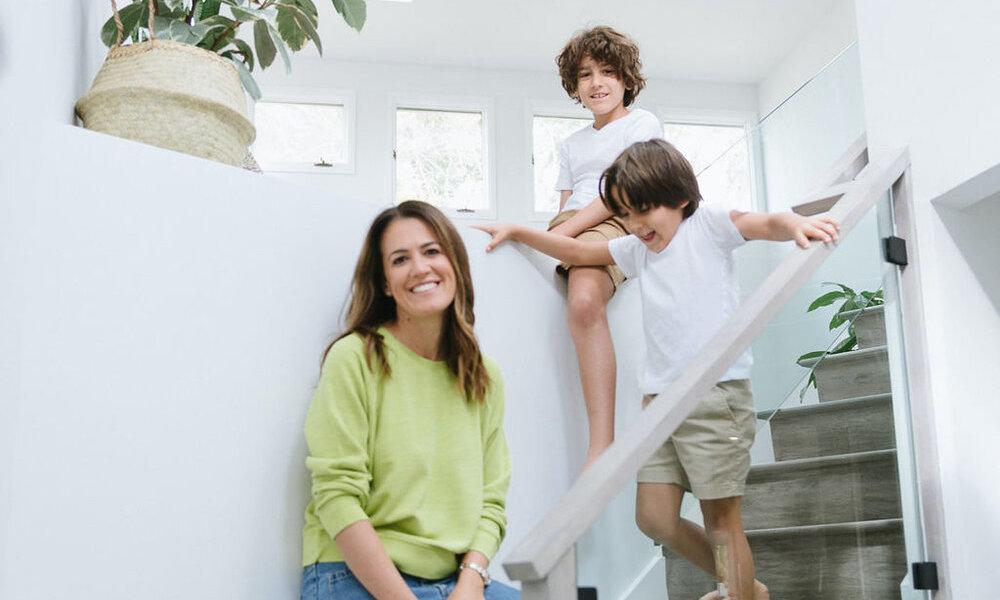We all want the best for our health, family, and planet. This is why it’s so important to learn about toxins and look for opportunities to avoid them, whenever possible.
Let’s say you are already buying organic foods, avoiding plastics in the kitchen, eliminated artificial fragrance, and are avoiding non-stick kitchenware. Now you’re ready to take non-toxic living to the next level.
So, what are your next steps?
We asked Aida Garcia-Toledo, founder of Non-Toxic Munchkin Consulting, for some of her favorite tips to eradicate toxins where they have the biggest impact.
Here are her three top tips to reduce your exposure to toxins in the home.
Skip Performance Fabrics in Furniture
Per- and polyfluoroalkyl substances (PFAS) are a group of man-made chemicals that includes PFOA, PFOS, GenX, and many other chemicals. According to the EPA, studies indicate PFAS can cause reproductive and developmental, liver and kidney, and immunological effects in laboratory animals.
PFAS chemicals are a family of chemicals applied to pretty much all furniture that claims to be stain- or water-resistant or other types of ‘performance fabric,” Garcia-Toledo warns.
While the two best known PFAS chemicals ( PFOA and PFOS of Teflon infamy) were phased out due to toxicity concerns related to cancer and other health effects, there are hundreds ( yes hundreds!) of new PFAS chemicals currently in use linked to neurotoxicity, reproductive problems, birth defects, developmental delays, and immune system suppression
How to Avoid PFAS
Avoid “ performance fabric,” stain-proof, and waterproofing fabrics in furniture, carpets, and rugs.
Ask the manufacturer: “ Are your fabrics water or stain-resistant? If so, how do you achieve this? Specifically: do you use C6 or other PFAS chemicals?”
You can also just ask “Do you offer fabrics that have not been treated to be stain nor water-resistant?”
Reduce Indoor Air Pollution
Take a close look at your indoor air: The fact is that most indoor air is more contaminated than the air outside, warns Garcia-Toledo.
Cleaning products, furniture (including mattresses), paint, flooring, construction materials and so much more can contribute to indoor air pollution.
How to Avoid Indoor Pollution
- First, open your window whenever possible. If you live near a busy street, open windows only during non-peak traffic hours.
- Then, make sure you are switching out your HVAC filters regularly. Choose filters that have MERV rating of 9 to 12: these high-performing air filters effectively filter out smoke, dust, pollen, and other 1–3 microns particles. For chemically sensitive individuals you might want to consider a MERV rating of 13 to 16, which offer the highest protection from bacteria, the flu virus, and contaminants as tiny as 0.03 – 1 microns in size. These are often used in hospitals and general surgery….. they can put a strain on a home HVAC so consult with a HVAC professional before using these.
- Finally, budget allowing, invest in a portable high-quality air filter. We have one in each bedroom- while the upfront cost is high these last for years and help clean the air in your bedroom which allow your body to properly restore overnight
- Invest in high-quality non-toxic bedding. Natural latex mattresses and pillows are a great non-toxic choice and last much longer than traditional synthetic options, so you’ll be helping to reduce waste as well as create a healthy sleeping environment.
Shop for Non-Toxic Paint
You’ve heard of low VOC paint by now. But did you know, choosing a non-toxic paint goes beyond looking for a low or zero VOC paint?
Paint can off-gas different toxins for months or even years. Even more important than the shade on the swatch is what’s inside your can of paint.
How to Choose a Non-toxic Paint
Take the following factors into consideration before you buy your next can of paint:
- APE’s : these are surfactants used in paints that are known endocrine disruptors. Most labels will specify if the paint is free of APE’s- if it is not labeled, ask!
- VOC’s: There are 2 levels of VOC you need to look at: First, the VOC content of the base paint. This is usually labeled on the paint can and can be ‘zero VOC’ or ‘low VOC’. The second type is the VOC content of the colorants. These are not labeled in the can and usually the darker the pigment, the higher the VOC levels. You will probably need to ask the manufacturer for these levels.
- Antimicrobials: These chemicals are endocrine disruptors. For paints, it is best to avoid antifungal or antimicrobial claims that say they kill germs on the surface of the paint.
Your home should be a safe haven for you and your family. One of the hardest things to protect your family against is toxins, many of which are invisible to the eye and may even be odorless or imperceptible to your senses.
Stay aware of the dangers of toxins, look for healthier, non-toxic options when it comes to paints and furnishings, and consider investing in air filters to help filter out the toxins from your home. You may not be able to single-handedly eradicate toxins from the planet, but you can single-handedly make your home a safer, less toxic place.
For more of Aida Garcia-Toledo’s tips and inspiration for a nontoxic home, follow @nontoxicmunchkin on Instagram.











Join the GloWell Community on Social!
Don't risk missing a single thing. Follow us on social and become part of the GloWell community.